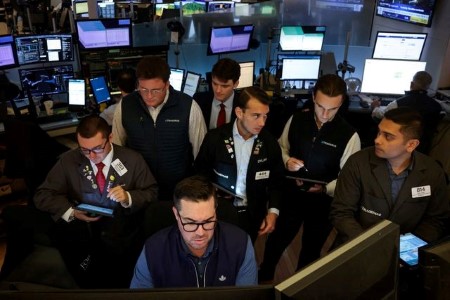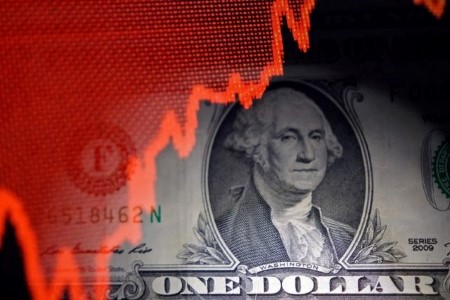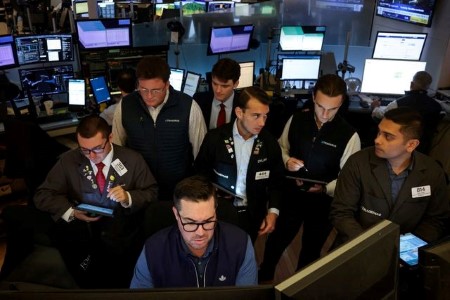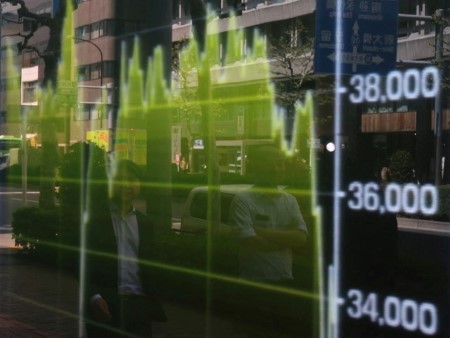NEW YORK – Bond investors are adding portfolio risk after a long period of caution, seeing the US economy in a “Goldilocks” moment, not too hot nor too cold, as they bet the Federal Reserve will leave rates unchanged for a fifth straight policy meeting.
Investors are buying more corporate bonds and adding a little bit more duration to their portfolios, suggesting they’re more comfortable going further out the curve.
The US central bank’s policy-setting Federal Open Market Committee is broadly expected to keep its benchmark overnight interest rate in the 4.25%-4.50% range when its two-day meeting ends Wednesday. Standing pat has been its default stance since December, given a surprisingly resilient economy that has seen a fairly stable labor market and generally subdued inflation.
“Our systems are saying that economic growth seems to be fairly firm, although we could argue that it’s fraying at the edges,” said Jeff Young, head of investment strategy, at PGIM Quantitative Solutions in New Jersey.
“We’ve seen some prices ticking up, but that’s not necessarily overall generalized inflation. It’s a one-off price increase on certain goods and that has allowed the Fed to maintain this wait-and-see posture.”
Futures tracking the Fed’s policy rate show a roughly 65% chance that the central bank will deliver a rate cut in September, with another possible at the October or December meetings. All told, rates futures on Monday implied about 44 basis points (bps) of easing in 2025, or just under two rate declines of 25 bps each.
The Fed reduced rates three times in 2024 before pausing its easing cycle early this year.
The US central bank’s current wait-and-see approach is a signal for bond investors to tiptoe back into risk-taking, analysts said.
“We are overweight credit risk within our portfolios, getting risk back that we sold or removed in March and the beginning part of April given the uncertainty and tight valuations at that point in the economy,” said Vishal Khanduja, head of broad markets fixed income at Morgan Stanley Investment Management in Boston.
“Growth is slowing, but not slowing into recession levels. So this almost makes it a very ‘Goldilocks’ type of environment for fixed income, especially credit where you don’t see recession fears and balance sheets are very strong, both consumer and corporate.”
FADING WORRIES
Signs of easing anxiety have been in place in the bond market the last few weeks.
J.P. Morgan said in its latest Treasury survey as of a week ago that the percentage of all clients that are long duration relative to their benchmarks has increased to 30% from 26% in the previous week. Adding duration can reflect optimism that interest rates will fall.
Expressed in number of years, duration relates to how far a bond’s value will fall or rise when interest rates move. In general, when rates fall, higher-duration bonds experience a greater increase in value compared to those with lower duration.
In the credit market, spreads to Treasuries have also narrowed since blowing out the week after President Donald Trump’s April 2 “Liberation Day” tariff announcements that panicked markets with the prospect of trade wars that could exacerbate inflationary pressures.
The investment-grade bond spread stood at 78 basis points (bps) last Friday, the tightest since mid-November last year, and 1 bp shy of the lowest point of 77 bps hit in 1998, according to ICE BAML data. It had touched 121 bps, or the highest since November 2023, in the days after Liberation Day.
The high-yield spread also showed a similar recovery, showing 284 bps last Friday, down from 461 bps a week after Liberation day.
A narrower spread indicates that bond investors are demanding less additional yield to hold riskier corporate bonds over safer US Treasuries and reflects confidence about the US economy and corporate health.
Bond volatility has also been low, suggesting a stable economic environment for fixed income investors. As of last Friday, the ICE BofA MOVE index was 82.09, a two-week low.
“We are running our portfolio at lower levels of risk than our long-run averages,” said Dan Siluk, head of global short duration and liquidity at Janus Henderson Investors, but he clarified that caution remains because the firm has kept duration shorter.
“We’ve got more triple Bs (corporate bonds with a Triple B-rating), we’ve got high yield in the portfolio, but rather than owning a three-year, I’m going to own the one-year, he added. “And that means I’m turning the portfolio over more, but I’m looking for good opportunities.
Other bond investors are similarly cautious, but on the lookout for relative value.
“The quality of the portfolio is the highest it has ever been given all the uncertainty. So we have been more defensive. But we’re still deploying cash and we are looking for relative value opportunities,” said David Norris, a partner at TwentyFour Asset Management.
“We think markets are very frothy given the action in spreads.”
(Reporting by Gertrude Chavez-Dreyfuss; Additional reporting by Laura Matthews; Editing by Alden Bentley and Anna Driver)






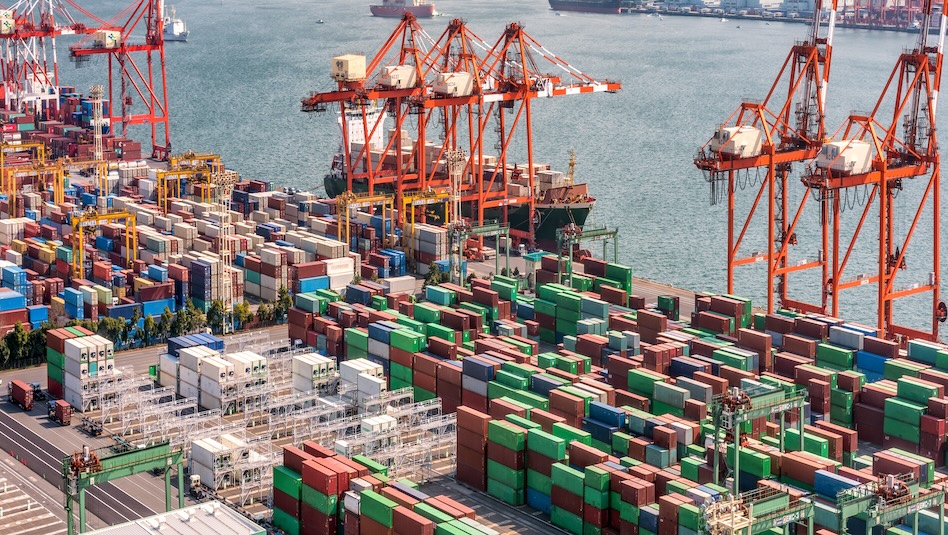
 DOWNLOAD
DOWNLOAD






